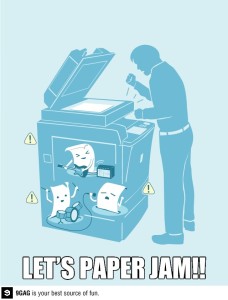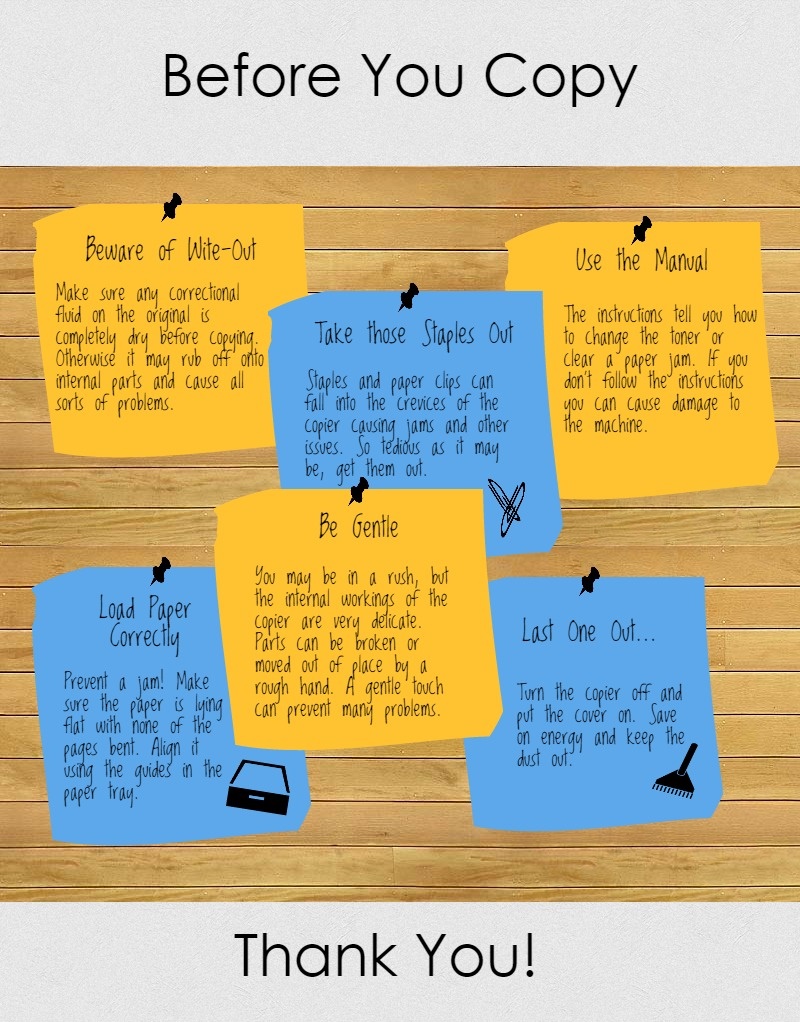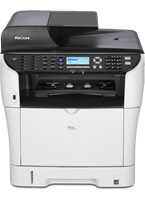Today’s best office machines offer a large selection of finishing options which may well enhance your work. “Finishing” refers to value-added operations which are performed after the ink has been applied to the paper. Some of these tasks take place before the printing comes off the press (inline), and others take place after the printing comes off the press (offline).
Listed below are some of the most popular finishing options you may want to consider in order to give your work that perfect touch.
Collating – the gathering and arranging of individual sheets or other printed components into a predetermined sequence. Collating creates consistent, logical sets from multiple parts. For example, when printing many copies of a book, the pages would need to be collated in numerical order before being bound. Collating can either be done before the pages have come out of the printer or as a separate step after printing.
Scoring – the process of making a crease in paper so it will fold easier. This indention is made using a blunt metal edge – from either a wheel or a rule – that compresses the paper fibers to enable smoother folding. Scored paper is less likely to cause harm to toner-type inks or thicker clear coats during the folding operation. Thicker paper types usually require scoring before being folded.
Folding – a procedure that bends over a printed piece so that it lays flat upon itself. There are many reasons why you may want to fold your printout. The most common reason would be to reduce the size so that it can fit into something smaller, such as an envelope. It is also often used as a design technique to create separate panels from a single sheet like for an invitation or a brochure. Popular folding styles available include the gatefold, letter fold, accordion fold, mini fold and the French fold.
Binding – holding the pages of your printout together. Here are some of the different methods that can be used to bind your documents:
- Saddle-Stitching is a method of holding together loose printed pages with staples down the middle. Many booklets are saddled-stitched.
- Comb Binding is the most common and simple binding style used in North America. Plastic comb binding books will open flat for easy copying and editing purposes.
- Spiral Coil Binding involves winding a single piece of pre-coiled plastic binding onto the edge of your book. Coil bound documents can open flat and can also wrap around for easy copying and reading. If you intend to mail your documents, this may be your best binding option since the spines are flexible and retain their shape exceptionally well.
- Perfect Binding is the way a paperback book is bound. Perfect bound documents stack well and look professional. However, the pages won’t open flat and cannot be removed once bound.
When choosing your office machine, make sure to look out for the finishing options you will need. Our helpful staff at Copyfaxes will happily talk you through the many different options available so that you can be confident that the machine you pick is most perfectly suited to you.






